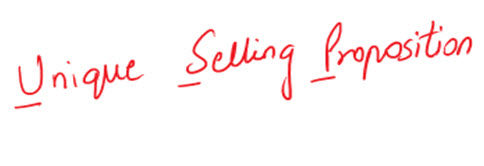 If you didn’t get a chance to read Part I of this post from last week, go read it right now HERE.
If you didn’t get a chance to read Part I of this post from last week, go read it right now HERE.
We left off last time ready to construct a comparison chart, based on the mystery shopping you completed. Well it’s as simple as dividing a blank page into four columns. The first one on the left needs to be labelled with the four components of your package; service/product, company, sales /service person, and terms. The second column is for entries about your company and the third column is for the competitor you are highlighting. Finally the fourth column is for the importance and benefits of the entry you made in the column on the far left.
As you begin, if it would be helpful to have a template to visualize what I’m describing, so here is one you are welcome to use and make into your very own.
Template for Competitive Mystery Shopping Results
[table id=5 /]
Download PDF version of the template here.
“The bitterness of poor quality remains long after the sweetness of low price is forgotten”
The items I listed within the four categories on the left side of the chart are simply suggestions. You can change them to whatever you want to compare, specific to fit your competitive situation.
Based on your diagnosis verbalize the differences that are most important and relevant to your buyer. In the process of presenting this information remember the phrase, “Don’t sell like you buy.” Prudently construct solid logical and emotional benefit statements to point up these differences. Follow up by using selected sales material/brochures with your buyer, along with a couple checking questions to affirm understanding.
If you have done a good job laying out your package, you will win the sale. If you haven’t done so well, your buyer will continue to see little or no difference between you and the other, less expensive guy. Frankly if you haven’t given enough reasons to buy from you, why should they?
 After completing your comparison, you might consider putting an exclamation point on your discussion by making a bold statement like one of these; “We charge more because we do more, in every area of the package.” Another attention-getter statement is this one;
After completing your comparison, you might consider putting an exclamation point on your discussion by making a bold statement like one of these; “We charge more because we do more, in every area of the package.” Another attention-getter statement is this one;
“If you can find a (service/product) package as comprehensive as (your company’s) for less money…buy it! Because when it comes to protecting your most expensive investment, you can’t afford to settle for just buying the cheapest, because (service/product) is not the same.”
So when a homeowner or commercial buyer says, “I can get the same thing from (whoever) for a lot less,” you can’t afford to respond with only a “deer in the headlights look.” You must know how to quickly and surgically prove that what you’re selling is NOT a commodity.
As we close out this topic, you need to be aware that you should construct one of these comparison charts for each major competitor you face that sells on price alone. Re-visit each of these companies yearly to update your chart on any changes that may have occurred.
Finally if, after reading this two-part post, you are sitting there with your head spinning around saying to yourself that it’s just too much work to prepare something like this, then you’re obviously not willing to do what it takes to compete. My guess is that you probably won’t be selling what you’re selling now this time next year!
——————Is Less Really More? ——————
There are countless bloggers nowadays giving sales training advice, virtually all of them writing only “teasers” of roughly 300 words. They hope to steer you to their online store, where they smother you with sales pitches for their “stuff.” On the other hand, my average post is 700+ words, where I provide readers with complete training lessons for FREE. Certainly I love it when folks come to my website and buy training materials too, but I want to earn you trust by providing posts of real value for FREE, whether you ever buy anything from me or not. If this post added value to what you sell, you can find my website HERE.
—————————————————————————
©2017 Robinson Training Solutions, LLC


